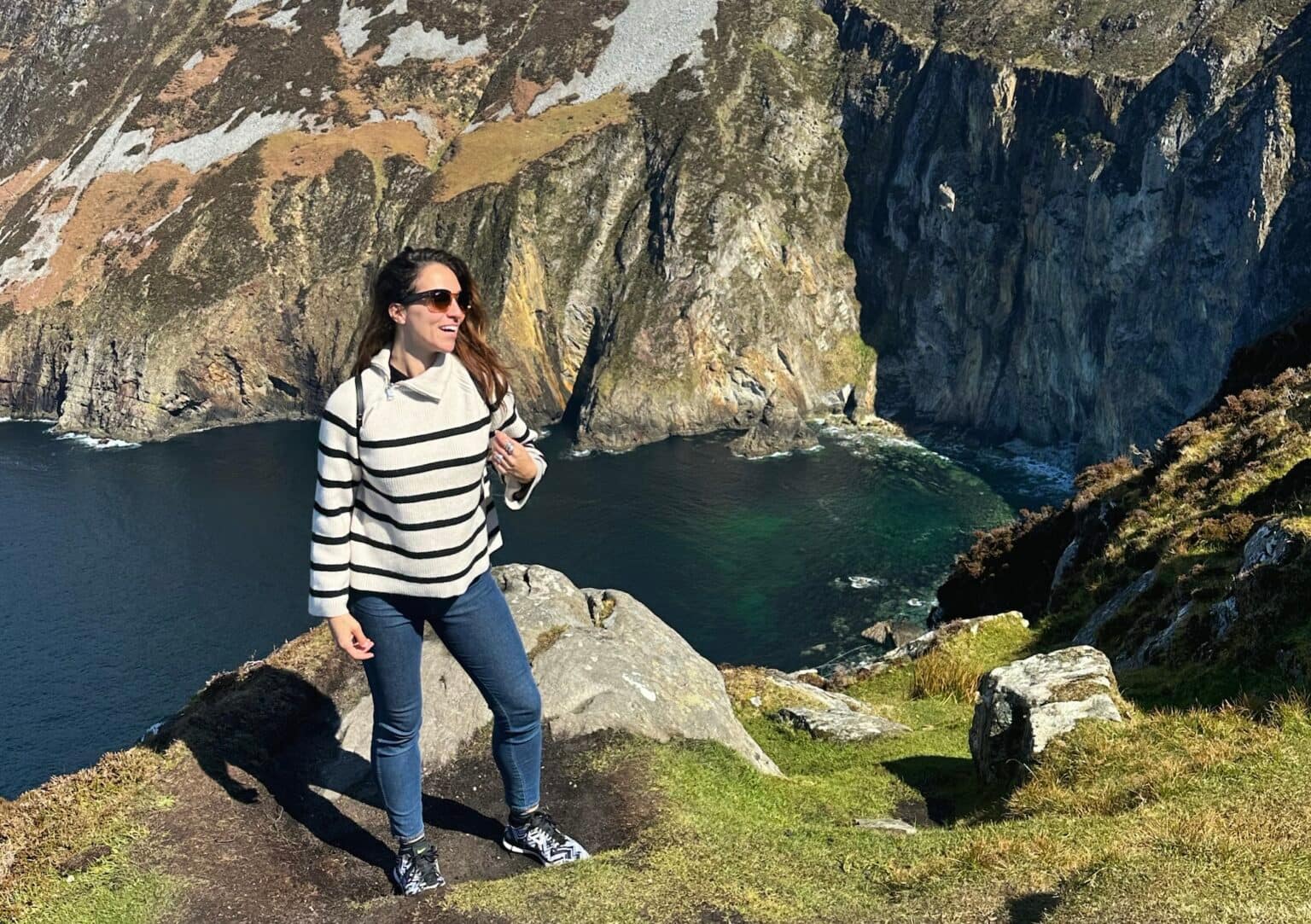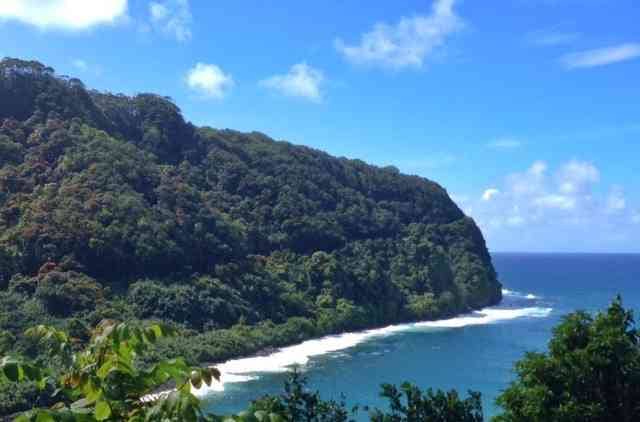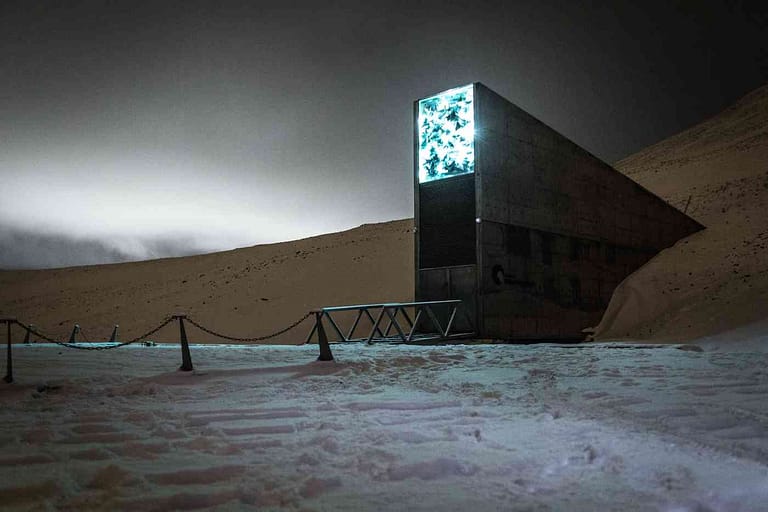Read This Before You Tour the Wild Atlantic Way
This past May I had the pleasure of weaving through the narrow, winding, occasionally harrowing roads of Ireland’s west coast. The opportunity to tour the Wild Atlantic Way.
I had dreamt of traveling through the Irish countryside for years. My general love of road trips made this route all the more enticing. My birthday on May 6 gave me the perfect excuse to buy myself a big travel goal as a birthday present.
Disclaimer: Lose the Map contains affiliate links and is a member of Amazon Services LLC Associates Program. If you make a purchase through an affiliate link, I receive a small commission at no extra cost to you.
Sidenote: People, especially women – I highly recommend giving yourself permission to buy yourself what you love as a form of birthday celebration.
It was one of the rare experiences that wasn’t overhyped; everything people had told me was true. The people were among the friendliest I had ever encountered. The landscapes were vibrant and stunning, the coastal towns cozy and charming.
Wild Atlantic Way Travel Tips
I plan to return to complete some parts of the route I didn’t quite get to explore like I wanted. So I started thinking of what I’d do differently. Things I wish I had known about driving the Wild Atlantic Way before starting my trip.
Then I figured, why not make all that wished-for advice a blog post? That way you won’t make the same mistakes I made on my 2024 Wild Atlantic Way trip!
*Disclaimer: This post contains affiliate links to tour, hotel, and other services I use and trust. If you click through and book something, I get a small commission at no extra cost to you.
How to Realistically Plan Your Route
When I travel, I set completely unrealistic expectations for the number of things I will do and/or see on any given day. Honestly, I also do that in my daily life. That leads to an endless cycle of frustration and self-criticism, but that’s for my therapist to worry about.
The crazy thing is, I usually end up fulfilling 95% of my ideal schedule and seeing most if not all of the attractions I set out to see.
I’m giving this backstory as a way of telling you…I don’t think I’ve ever failed so miserably in terms of planning and timing as I did on the Wild Atlantic Way.
The country of Ireland looks relatively tiny. Given six days and looking at the northern and western coasts, all I could think was, “of course I got this! People need ten days to do just the western route? What the hell are they doing?”
And that, my friends, was hubris.
Wild Atlantic Way Route Driving Time
The road down the coast is beautiful. It is also endlessly winding, and 8-10 hours of driving a day quickly rack up to exhaust you. One day I almost fell asleep in my car. I had to pull over and take a catnap in a parking lot for twenty minutes.
Can you blame me?! Look at all those peninsulas! They are deceptively long.
All this to say…don’t make the same mistakes I did. Give yourself plenty of breathing room. Honestly, I wouldn’t plan any schedule that takes much more than six hours of driving a day. Try to do the Wild Atlantic Way in 7 days at least, if you want to actually see most of it.
Take a Break While Driving The Wild Atlantic Way
If you have a town/city halfway through you’d really love to spend time in, book two nights there to give yourself a break. Bonus points if there are a lot of attractions nearby. Galway is an obvious stop, looking at the map, but it is a fairly big city. However, it’s a great base from which to explore the surrounding area.
Go on one of the many Connemara day tours. Otherwise, take a drive and then a ferry service to the Aran Islands.
Stop at Ireland’s “Tidy Towns”
Various bed and breakfast owners kept referring to Irish towns they recommended as “tidy”. I brushed it off, assuming it was one of those Irish-isms – like the ubiquitous use of the word “wee” – that perhaps meant “nice” or “charming”.
But no; there are actual designated “Tidy Towns” in Ireland that take part in an annual competition to determine who’s the…tidiest?
The Tidy Town competition started in 1958. It was created as a way to award the most livable, beautiful, well-preserved, and cleanest towns in Ireland. The competition incentivizes the preservation of many rural Irish hamlets. It also encourages citizen-oriented development as well as environmental conversation.
The competition seems to be a bonafide success, with villages all over Ireland taking pride in their communities being honored. Now, former and current Tidy Towns attract tourists from all over the country, and the world, thanks partly to the care they paid in developing and beautifying their community.
My favorite “Tidy Town” near the Wild Atlantic Way was Cong, which I highly recommend to travelers. You can also stop in larger “Tidy Town” urban centers like Ennis.
Combine the Wild Atlantic Way With Northern Ireland
The Wild Atlantic Way route technically starts from Muff in the north and ends in Kinsale down in County Cork.
Muff is just over the border from Northern Ireland. Also, the more you write “Muff”, the weirder it sounds. If you’re flying into Dublin or Belfast to start your trip, you might as well drive the Northern Irish coast as well. See attractions like Giant’s Causeway and Dunluce Castle before embarking on your western coastal journey.
For me, Dunluce Castle was definitely the most impressive sight, followed by Giant’s Causeway, and lastly, the Dark Hedges that have been popularized on Instagram. Honestly, they look much more impressive on social media – in my opinion. When you get there, you’re going to be surrounded by influencers and bus tours. Unless you get there right around dawn or dusk, the lighting is not going to be ideal for getting that spooky, classic, Dark Hedges sight.
However, spending a night in Belfast, and a day at the Titanic Museum – trust me, a must-see even if you never cared about DiCaprio’s fate on that wooden panel – followed by that little rural trip around the Northern Irish coast, is a great way to start your journey. Belfast plus the three sights shouldn’t take more than two days, one night.
There are no border checks or papers required to travel from Northern Ireland (part of the UK) to Ireland and vice versa. You will only notice a difference when the road signs switch from kilometers to miles and back again. Also when the accents become even more incomprehensible.
Sorry Belfast, I loved you, but I could not understand you.
Make the Right Car and Driving Choices
My rental company good-naturedly upgraded my small compact rental to a crossover, and handed me the keys. And let me tell you, I really wish they hadn’t.
Some of the roads, especially those going through towns, are tiny. You really want to get the smallest possible car you will still feel comfortable in. Something in the Fiat – Peugeot – Opel line, i.e. small and European.
Rental companies tend to have both manual gear and automatic cars available, though if you know how to drive a stick shift you will probably have more options.
Lastly, I highly recommend you turn off any automatic lane assist. To be clear, many of the roads on and around the Wild Atlantic Way are not comfortable two-directional. Someone can pass, sure (…sometimes), but you’re probably going to have to go to the edge of the road to allow it.
I can’t tell you how many times the automatic lane assist almost threw me into a hedge in order to get me “centered” in my non-existent lane.
Oh and, of course, the Irish drive on the left side of the road. So make sure you get comfortable with that before driving off into the sunset (and in the wrong direction). Also, driving a stick on the other side of the road is even more of one, as you have to use your (usually) non-dominant gear shifting hand to drive stick.
Lastly, you really want to keep an eye out for roving packs of sheep. They’re adorable, and also everywere. And also have the tendency to wander into the middle of the road.
Prepare for Weather, in More Ways Than One
Here’s something that will come as no surprise: it rains in Ireland. Like…a lot. I was exceedingly lucky that of my eight days in Ireland, I only saw a day and a half of pouring rain.
I realized how rare of an event that was when random Irish people would pass me walking around a town or a park and remark “WONDERFUL weather we’ve been having, don’t you agree?” with a mile-wide smile on their face. My Greek self inwardly chortled at describing a 60 F/15 C partly cloudy day in May as “wonderful” weather, but then, I was clearly in a different reality.
Many articles describing what you need for the Wild Atlantic Way tell you to be prepared with raincoats and boots, and you should be. Things that are important in the Irish countryside: being warm and waterproof. Things that are less important: looking chic.
But, people talk less about how much weather can affect your route. For example, a lot of the beautiful coastal destinations are completely altered in heavy rains. It was noticeably overcast and dark in the charming town of Dingle, and other destinations prized for their stunning sea views were noticeably less photogenic with fog and low clouds limiting visibility to the length of my arm.
When I go back to drive this route, I would have backup options ready to go for the more coastal/scenic destinations, or very outdoorsy places like National Parks, in case of bad weather.
Get the Timing Right When You Tour the Wild Atlantic Way
Part of the reason I saw such little rain during my trip, besides my incredible luck, is because I went at the right time.
Ireland receives a lot of rain year-round. But it gets the fewest inches per month in April, May, June, and July.
Though you may think it’s best to do the Wild Atlantic Way in the off-season, and thus save up on some costs and encounter fewer crowds, I highly recommend against this.
Honestly, even during the “peak” season during which I went, I rarely found crowds to be a problem. At Slieve League, one of the top attractions was in a parking lot with no more than 8-10 cars. I never waited to use the facilities anywhere. I walked into pubs where I was not only the sole non-Irish person, but the sole non-local person there. When I walked into restaurants, I found somewhere to sit and eat immediately in Donegal, and Dingle, and plenty of other non-D charming small towns.
Going during the “dry” season – I highly recommend May to July so you will also get some relative warmth – is the best choice for the Wild Atlantic Way.
Know What You Want to Prioritize
The beautiful thing about this Irish route is that it has almost everything. Historic castles, picturesque towns, national preserves, nature walks, gorgeous vista points, etc.
In fact, there’s so much to do on a tour of the road that you probably won’t be able to stop at every Wild Atlantic Way discovery point. For those curious, “discovery point” is what they call their notable attractions.
So you should probably narrow down what attractions you want to prioritize before you get there. Cozy towns? Day hikes in national parks like Connemara and Killarney? Some lazy afternoons on windy but beautiful beaches?
To be sure, there are certain attractions I would classify as “can’t miss” on an Ireland tour. These include Connemara, Slieve League cliffs, the Cliffs of Moher, and the Dingle Peninsula. But for many other discovery points on the Wild Atlantic Way, you have leeway to make your own decisions.
I absolutely loved the small-town charm of Donegal and am so happy I spent time there. Other people may prefer to take that day and explore an extra National Park at Killarney.
Book Certain Attractions Ahead of Time
My last-minute self was sorely disappointed to arrive at a few places on the route and discover they needed to be booked way ahead of time.
For example, most historic distilleries require advance bookings, as you can’t just walk in and start exploring on your own. You usually get assigned a knowledgeable tour guide to take you through, and that requires a time slot. In many places, you have the option to sign up for a private tasting as well.
Another option is to see the Cliffs of Moher by boat. This trip gives you a very different view of one of Ireland’s most famous attractions. You can book a private tour, but once again, arrange it ahead of time.
As much as it’s good to be flexible while on the Wild Atlantic Way, since you will want to make advanced bookings for some sights and hotels, you should also have a rough idea of a few major sights you’re hitting on which days. I highly recommend staying at a castle for at least one night, and that’s definitely something you want to book in advance if you want to a) find rooms b) spend less than $500 for a night.
Leave Two Days for Cork
Many people finish their Irish coastal journey in or around Cork. And then promptly leave to catch a flight.
I unfortunately caught a fever my very last day, so I spent 24 hours recovering in a hotel room in Cork. And I can’t wait to go back and actually see the city, including some incredible sights around it, like Blarney Castle and Gardens.
Cork is one of the most significant and historic cities in Ireland. It used to have the biggest population in the country and has some of the most impressive urban architecture as well. Honestly, I didn’t find most of the buildings in Dublin or Belfast especially pretty, though I did find them fun, and Cork stood out to me among the Irish cities I saw.
I highly, highly recommend rewarding yourself after a long drive by spending a couple of days eating, exploring, and drinking in Cork. You will also find the Jameson Distillery here, which is worth booking a small group tour to visit.
If You Prefer Not to Plan Your Own Trip:
You have two options. One is a Wild Atlantic Way 7 Day Itinerary I’m publishing, soon to be linked here. Otherwise, book one of the many Wild Atlantic Way tours available online, or group tours to Ireland in general. View tour packages in Ireland and Wild Atlantic tours from GetYourGuide, one of my favorite affiliates, below:
Have you visited the Wild Atlantic Way? What was your favorite attraction or thing to do on the trip? Comment below and let me know!



















Your guide to the Wild Atlantic Way is detailed and informative! This is a dream route for scenic exploration. Planning a trip along this coastline soon.